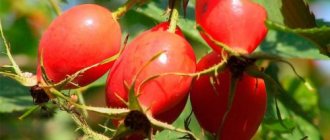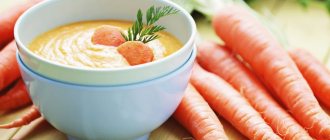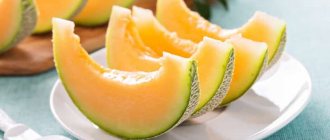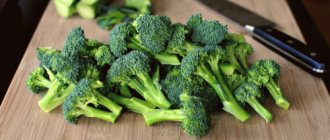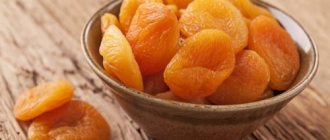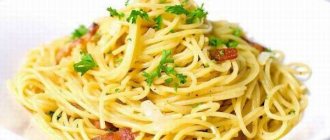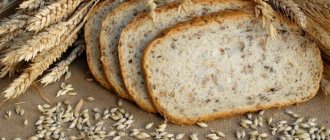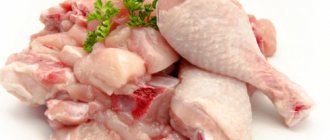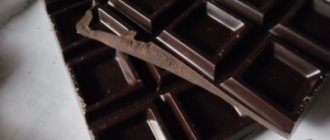With pancreatitis, enzymes digest the pancreas, that is, the process of autolysis begins, which causes severe pain. The consumption of certain foods and drinks leads to a worsening of the condition or exacerbation of the disease, so the patient is forced to adhere to a strict diet for a long time and carefully introduce many foods into the diet.
It is especially important during the recovery period to receive a sufficient amount of vitamins and microelements necessary to strengthen the immune system and the normal functioning of all body systems. That is why the question often arises whether grapes are good for pancreatitis.
Useful properties of the product
The grapes are characterized by the following indicators:
- antioxidant complexes – slow down the natural aging process, improve the general condition of hair, skin and nail plates;
- ascorbic acid and retinol – activate regeneration processes at the cellular level, increase the functionality of the immune system;
- B vitamins – are responsible for the stable functioning of the nervous system, reduce the negative impact of external factors on the body;
- potassium – normalizes heart function;
- calcium – reduces bone fragility, participates in excitation/inhibition;
- magnesium – necessary for the heart muscle and stable functioning of the immune system;
- folic acid – improves the performance of brain cells; during pregnancy, it is responsible for the formation of cellular brain structures in the fetus;
- phosphorus – necessary for bone and dental tissues.
Vitamins and minerals take part in increasing the activity of the immune system, acids and plant fiber improve digestion processes.
Regular consumption of grapes helps rid the body of excess salts, toxic substances, and toxins. Due to its active components, the evacuation of sputum, produced during inflammation of the bronchial and pulmonary sections, is accelerated.
Due to their high glycemic index, berries increase appetite. To avoid accidental overeating, they are recommended to be consumed 2 hours before meals.
Like any fruit, grapes should be eaten in the first half of the day. Large quantities are prohibited: fruit acids corrode tooth enamel, and the active components cause blood thinning, which can adversely affect the body during treatment with anticoagulants.
Symptoms of pancreatitis
The disease occurs in two variants: acute and chronic. In the first case, clinical signs appear:
- Pain syndrome - of a specific nature, with dull or cutting sensations, localized in the area of the right or left hypochondrium;
- Increased body temperature - along with it, the level of blood pressure can sharply increase or decrease; such a manifestation serves as a sign of an inflammatory process rapidly developing in the pancreas;
- Changes in skin color - pallor, a grayish tint to the face; attacks of nausea - accompanied by constant dryness in the mouth;
- Severe vomiting - inclusions of bile in the secretion is considered the main symptom of pancreatitis.
The main principle of treating the disease is to reduce the load on the gallbladder and pancreas. The chronic form of the pathology develops over a long period and can be asymptomatic for several decades.
The initial stages of the disease are manifested by discomfort in the hypochondrium, lumbar region or on the left side of the chest after each meal - for 1-2 hours.
Unpleasant sensations arise:
- After a lot of fatty, spicy food;
- Consumption of alcoholic beverages, coffee;
- Chocolate and confectionery.
The problem is associated with the impossibility of normal processing of these products by the pancreas and the gradual development of the inflammatory process. After the disease progresses into an exacerbation, the patient feels heaviness in the abdomen, nausea, weakness, and pain.
An advanced form of pancreatitis leads to the gradual death of organ tissue and its complete dysfunction. Insufficient production of enzymes provokes the development of type 2 diabetes mellitus at the last stage of the disease.
In what cases are grapes strictly prohibited?
Grapes are prohibited in the following cases:
- individual intolerance (allergy);
- acute forms of any diseases of the gastrointestinal tract and pancreas, including pancreatitis.
The use of these berries during pregnancy also causes a lot of controversy.
The main reason is the high amount of resveratrol. This chemical can cause toxicosis in a pregnant woman. In addition, the woman’s digestive system is weakened during this period and cannot always cope with the peel. And increased acidity due to consumption of berries can cause vomiting. Did you know? Among alternative methods of treatment there is grape therapy (amelotherapy). It includes the active consumption of grapes, including seeds, parts of the vine, and leaves.
Dietary requirements
Damage to the pancreas requires changes in the usual diet, a transition to a gentle menu. A diet for pancreatitis is a prerequisite for normalizing the body’s functioning; it is recommended for patients at any form and stage of the disease.
The slightest deviation from the prescribed diet leads to an exacerbation and requires the following rules:
- During the first three days, the patient must remain in bed;
- At this time you cannot eat, you are only allowed to drink in sufficient quantities: still mineral water, green tea, liquid jelly and rosehip decoction;
- After the pain disappears, the patient is gradually transferred to a strict diet with low-fat foods.
For pancreatitis, the menu consists of lean meat, soups cooked in vegetable broths, cottage cheese, and cheeses with minimal fat content.
Diet for liver cirrhosis
We should start with the fact that cirrhosis is the outcome of various chronic liver diseases and treatment options at this stage of the disease are extremely limited. The only radical treatment today is liver transplantation. Other therapeutic approaches are aimed at maintaining liver function and preventing liver decompensation. Nutrition can be classified as one of these approaches. One of the most common problems with liver cirrhosis is insufficient absorption of proteins, fats, vitamins and minerals1. This condition (doctors call it malnutrition) occurs in 20–50% of patients with cirrhosis. Lack of nutrition can lead to exhaustion and loss of muscle mass, sarcopenia. The development of malnutrition and sarcopenia worsens the patient’s condition and the prognosis of the disease2. Therefore, diet for liver cirrhosis is an important component of patient support.
Traditionally, in Russian dietetics, diet No. 5 according to Pevzner was recommended for liver diseases. However, modern European experts take a different approach.
According to modern dietary recommendations, the calorie intake of a patient with liver cirrhosis should be at least 35 kcal/kg body weight per day1. You need to eat little by little, but often, avoiding the feeling of hunger. A late night snack and early breakfast are required.
The amount of protein in the diet of a patient with liver cirrhosis should be at least 1.2–1.5 g per kg of weight1. It was previously believed that protein should be limited if liver function was insufficient, but modern experts say that sufficient amounts of this macronutrient are not only safe, but also help improve brain health1. If it is difficult for a person to get such an amount of protein from usual dishes - with cirrhosis of the liver there is often an aversion to meat - it is permissible to use mixtures with protein and BCAAs (amino acid preparations)1.
The amount of carbohydrates and fats in food is usually not specified separately. But, given that in patients with liver cirrhosis, excess fat can cause diarrhea due to impaired absorption, it is reasonable to give preference to relatively low-fat foods. Vegetable fats are preferable to animal fats in the patient's diet.
Be sure to limit salt to 5 g per day. This means that you need to cook without salt, and add the measured 5 g, adding salt to already prepared dishes. To prevent food from seeming tasteless, it is advisable to use spices, herbs, and a variety of homemade sauces (store-bought ones contain an excessive amount of salt).
Disease prevention
To prevent exacerbations of chronic pathology, the following rules should be followed:
- Sausages and fatty foods are completely removed from the diet - they do not contain the vitamins and microelements necessary for the body;
- It is allowed to eat porridge cooked in water or low-fat milk;
- Fruit consumption is reduced to a minimum.
Inflammatory processes in the pancreas are incompatible with alcoholic and low-alcohol drinks. Complete abstinence from alcohol will reduce the frequency of exacerbations of the disease and prevent its development.
Nicotine addiction, self-medication with medications (antibacterial, diuretic, to reduce high blood pressure, anti-diabetes, etc.), lack of necessary physical activity lead to the formation of inflammation in the digestive organs. Elimination of predisposing factors reduces the risk of developing pancreatitis several times.
Norms and basic rules of use
In the chronic phase of pancreatitis, you must adhere to the following rules:
- do not eat large quantities of grapes (eat no more than 100-200 g);
- eat small portions;
- avoid eating several types of prohibited foods at the same time;
- If pain occurs, exclude the product from your diet for 5-7 days.
What is allowed
The specific taste of steamed dishes without the usual amounts of salt at first seems bland to patients and causes disgust. Gradually, the body will adapt to new conditions, and the dishes will become tasty.
The disease requires serious restrictions:
- Vegetable oil and butter are added in minimal quantities;
- Confectionery products, full-fat milk, nuts of all varieties and seeds are practically excluded;
- Eating fresh baked goods is not allowed - bakery products should be slightly stale;
- White bread is replaced with bran products.
For sweets, you can eat marmalade, marshmallows, marshmallows - without dyes or flavors. The lack of glucose is compensated for with natural honey and dried fruits. All products are consumed in reasonable quantities.
Grapes for pancreatitis after an exacerbation or acute form of the pathology can be consumed no earlier than after 2-3 months. The prohibitions are associated with a concomitant symptom of the disease - diarrhea, which can intensify under the influence of plant fiber found in berries.
In addition, patients may suffer from a spontaneous allergic reaction - during an exacerbation, the body is exposed to any allergens.
Livestock products
The disease does not require complete exclusion of fish and meat products. They must contain a minimum amount of fat; for preparing dishes in their dietary section, the following is used:
- Rabbit, chicken;
- Veal, turkey, beef;
- Pike, zander;
- Bream, pollock, cod.
Eating baked skin or crust, classic scrambled eggs is strictly prohibited. To diversify your diet, you can eat steamed omelettes and boiled chicken eggs. Fermented milk products are also an integral part of the diet.
Allowed low-fat foods are:
- Sour cream, yoghurts;
- Cottage cheese, fermented baked milk;
- Kefir, goat milk.
Classic whole milk is prohibited as a drink - it provokes dyspeptic disorders and increased gas formation. It can be used in cooking. A small amount of unsalted butter will not harm the diseased pancreas, but you need to eat it in reasonable quantities.
Grapes for acute pancreatitis
Berries are removed from the diet for a number of reasons:
- Contains a large amount of acids - they provoke the active production of enzymes in the pancreas. Increased work of the organ increases inflammation and negatively affects overall well-being.
- Flatulence - grapes with pancreatitis lead to increased gas formation and bloating. Discomfort, pain, weakness are complemented by unpleasant sensations due to the accumulation of gases.
Black or red grapes contain large amounts of glucose, which during illness is constantly released into the blood. The body does not have time to process it, gradually leading to endocrine dysfunction and the development of type 2 diabetes.
Benefits and harms
Sweet and sour berries contain many substances necessary for the human body. They contain 11 vitamins, including A, C, PP, group B, and salts of 6 organic acids (malic, tartaric, citric, etc.).
The fruits are rich in magnesium, iron, phosphorus, manganese and zinc, but most of all they contain potassium. Grapes contain nonessential (glycine, cysteine) and essential (leucine, lysine) amino acids and pectins.
Thanks to all these substances, berries, when consumed regularly, benefit the body and alleviate the human condition in diseases of the skin and internal organs, and promote a speedy recovery.
Grapes are an excellent antioxidant: they protect cells from destruction, suppress cancer processes and increase resistance to infections.
Potassium contained in the fruits of the plant improves hematopoiesis, strengthens the heart muscle, prevents the formation of blood clots, and normalizes blood pressure.
Juice from ripe grapes can relieve a person from migraine headaches, helps with indigestion and constipation, bringing stool back to normal.
Juice from ripe grapes can relieve a person from migraine headaches, helps with indigestion and constipation, bringing stool back to normal.
It also lowers cholesterol and has a diuretic and expectorant effect.
Despite a number of beneficial properties, vine berries can cause harm to the body:
- Can cause an allergic reaction in humans.
- They negatively affect tooth enamel, destroying it if you do not rinse your mouth with water in time.
- When consumed in large quantities, they contribute to obesity and the development of diabetes.
- When consumed with alcoholic beverages and fatty foods, they trigger fermentation processes in the digestive system and cause its upset.
- With a stomach ulcer or gastritis with high acidity, the symptoms of the disease worsen.
We recommend reading: Is it possible to drink fermented baked milk if you have pancreatitis?
If a person has the health problems described above, he should eat the fruits of the vine with caution, and often, as directed by a doctor, he should completely exclude them from his diet.
Grapes for chronic pancreatitis
Eating berries during an exacerbation of the disease is strictly prohibited. Violation of the rules will lead to a deterioration of the condition and the inability to relieve the symptoms of the disease. Is it possible to eat grapes with chronic pancreatitis in remission: only in the absence of diabetes and in minimal quantities.
Doctors recommend replacing fresh berries with raisins. It is quite tasty and does not provoke the development of side effects such as flatulence or increased work of the pancreas. Pancreatitis requires constant adherence to a diet, regardless of the form and stage of the pathology. Any violation can provoke an attack and require long-term treatment.
Can I drink grape juice?
Ready-made drinks sold in stores should not be consumed by patients with pathologies of the digestive system. They contain a large amount of harmful substances:
- Concentrates;
- Flavoring additives;
- Easily digestible carbohydrates;
- Acids.
Excess glucose leads to insulin surges and the subsequent development of diabetes mellitus combined with pancreatitis. Is it possible to drink grape juice during remission: no.
Doctors allow a small amount of freshly squeezed drink, diluted with water, made from carrots, pumpkins, and apples. Lemon, cranberry, and pomegranate juice are also prohibited.
Despite their attractive appearance, eating grapes for pancreatitis with acute inflammation of the pancreas is not recommended. A moment's pleasure can turn into a sharp attack of pain, the transition of a latent disease into an acute course.
Only a gastroenterologist can allow or prohibit the consumption of grapes for inflammation of the pancreas. If there are no concomitant gastrointestinal pathologies, then its use during the period of remission is allowed. The main rule is not to forget that even a healthy person is not recommended to eat more than one bunch a day.
Raisins for pancreatitis
In raisins, the concentration of both beneficial and harmful substances for the pancreas is increased. Therefore, it is recommended to use it only during the stage of the disease without clinical manifestations. It is allowed to eat it in small quantities or added to various dishes, for example, baked goods, porridge, cottage cheese, etc. Patients with exacerbation of pancreatitis are allowed to eat raisins only grated or in compote.
Raisins themselves contain a high amount of acids and simple carbohydrates. You can prevent the negative effect of these components on the pancreas if you consume it in compote. This will help normalize the water-salt balance in the body, improve the body's defenses, and prevent the development of infectious diseases.

